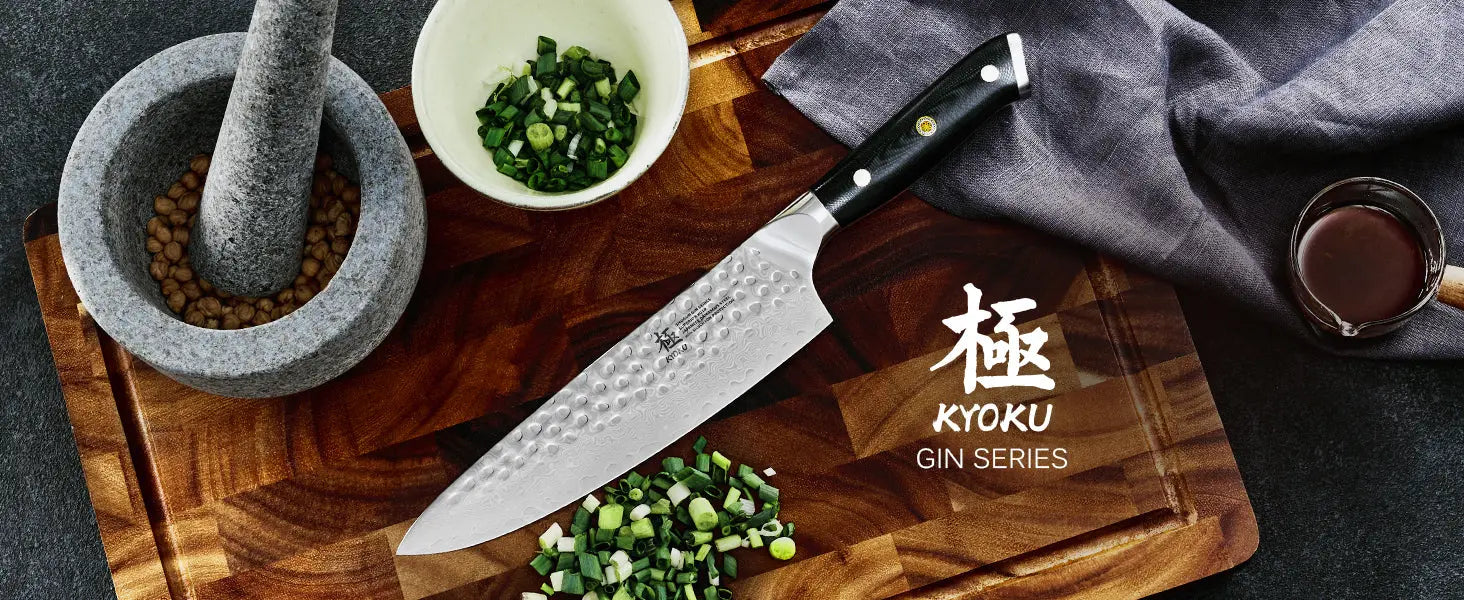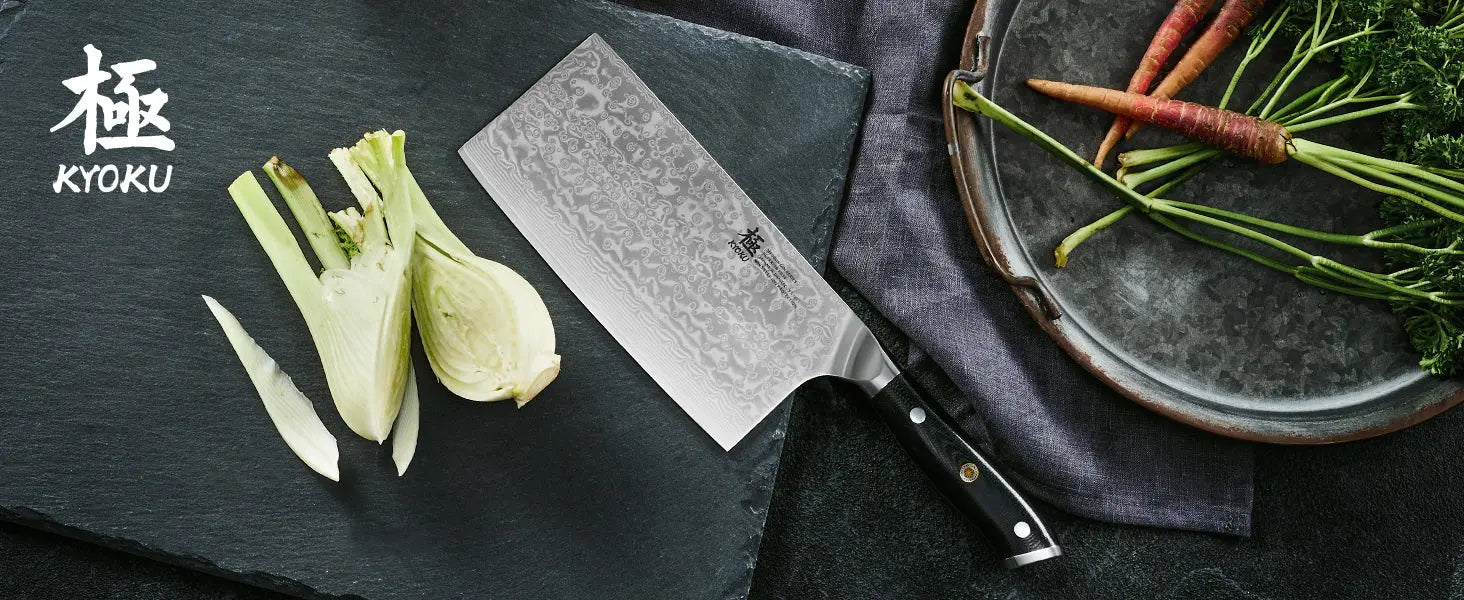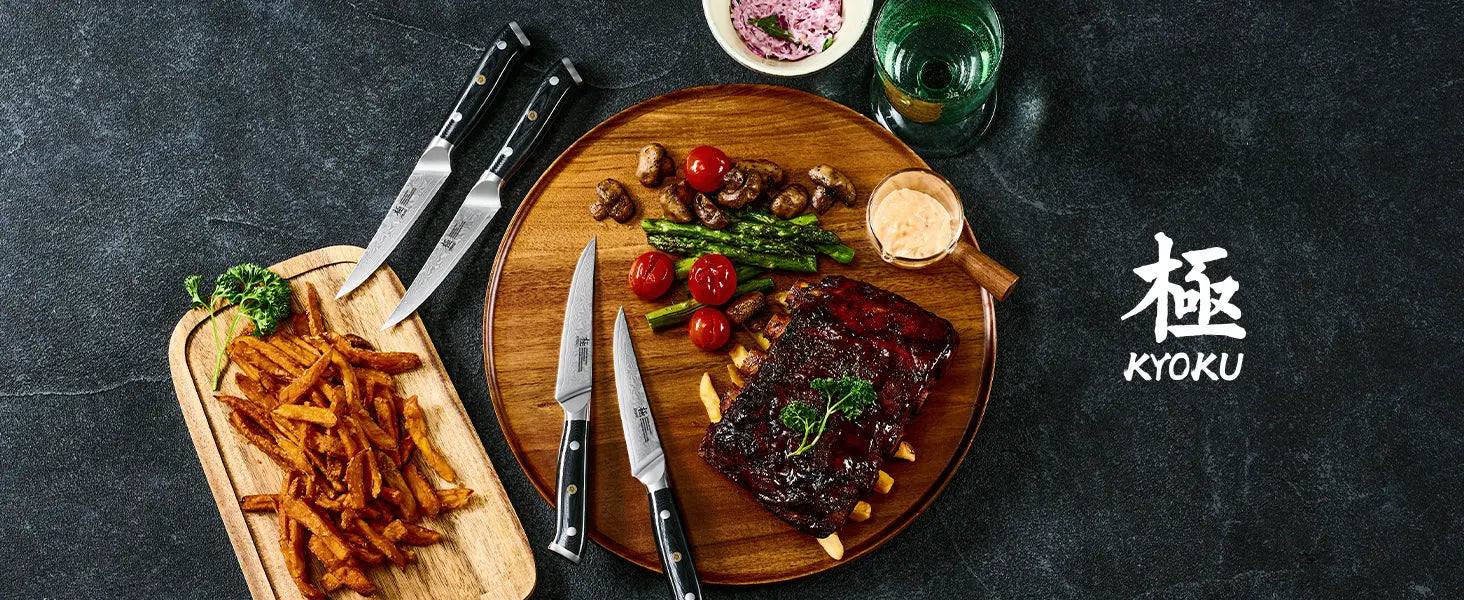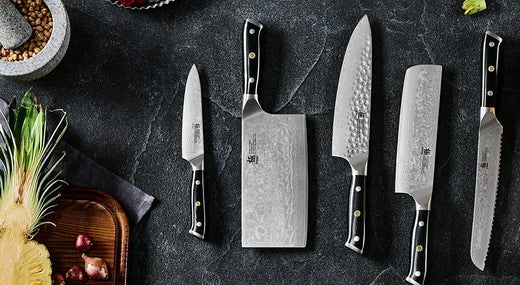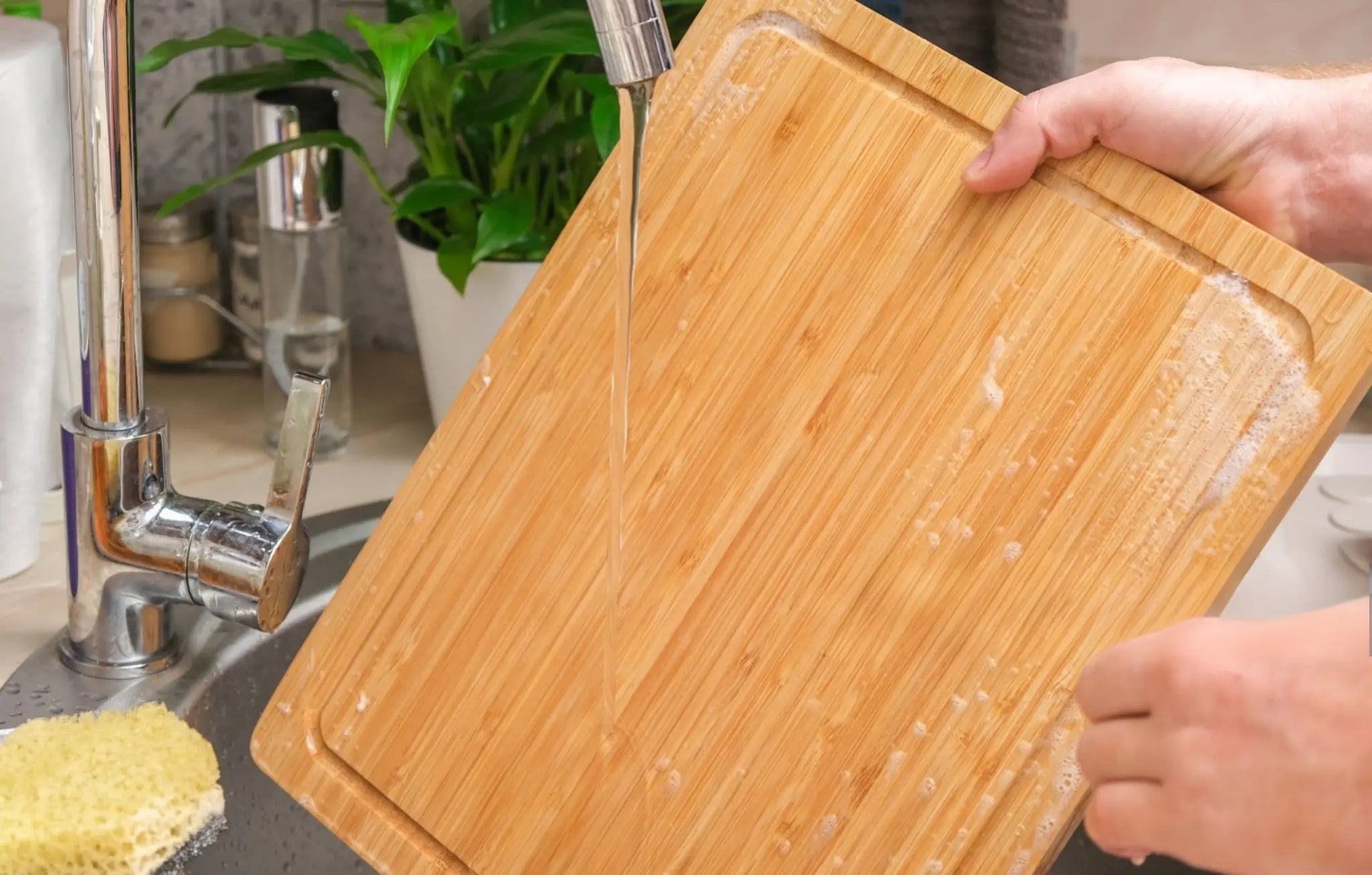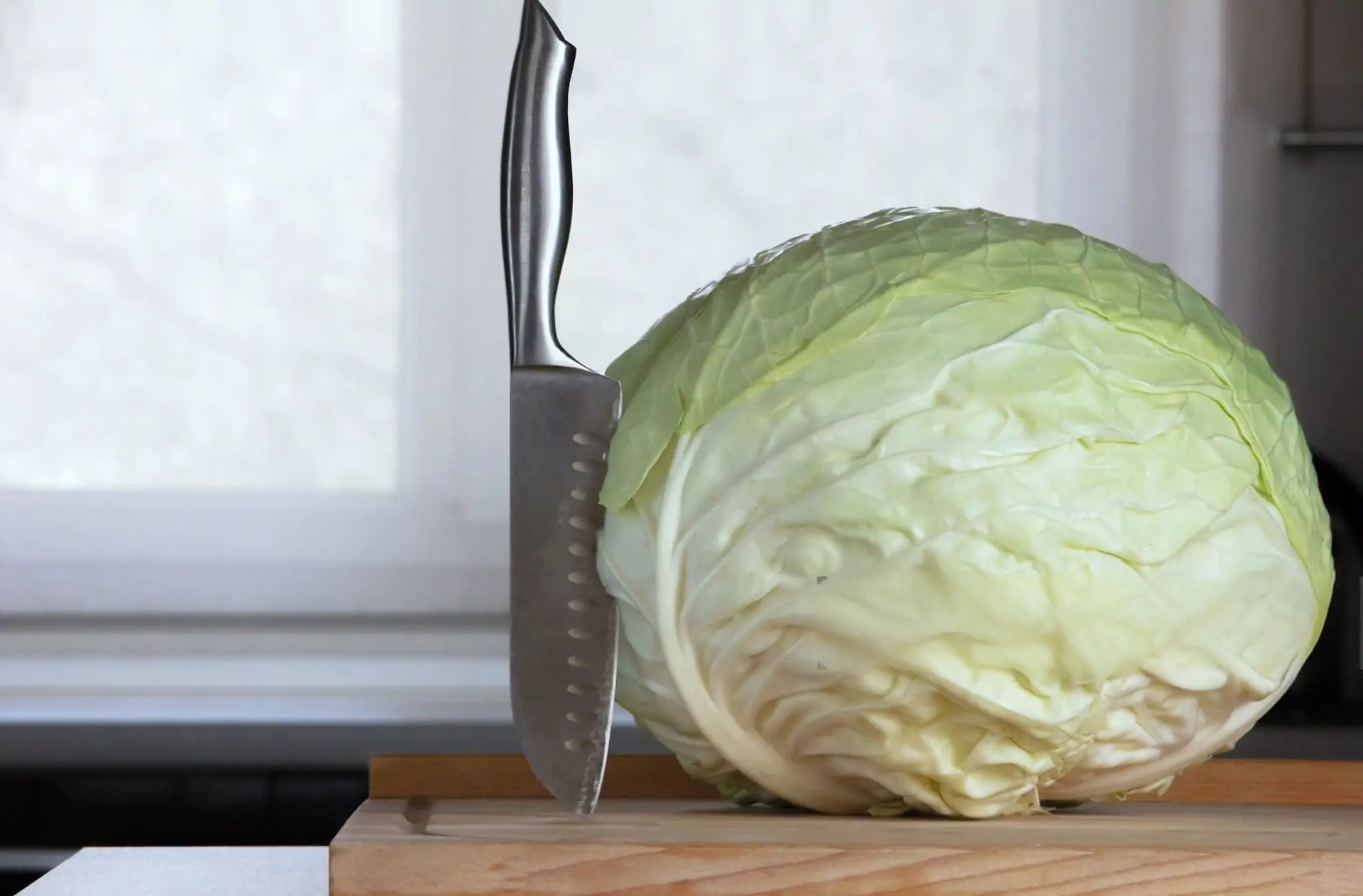Kyoku Spirits
Kyoku draws from the samurai's legacy, creating affordable high-end Japanese cutlery for chefs and home cooks worldwide with a passion for culinary creativity.
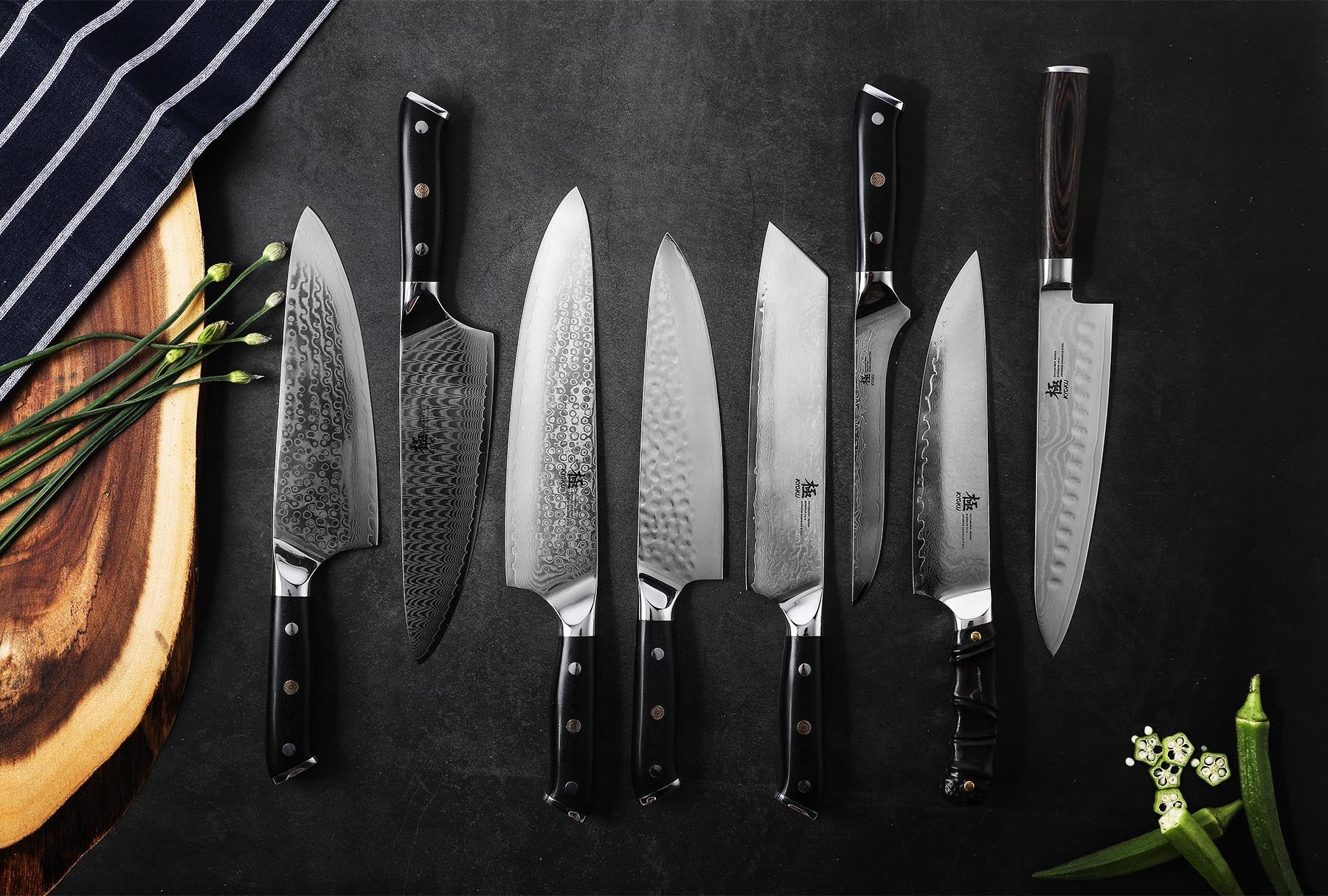
HOW TO CHOOSE THE RIGHT JAPANESE KNIFE FOR YOUR NEEDS
In this guide, we'll provide a comprehensive guide on how to choose the right Japanese knife for your needs, considering factors such as type of knife, blade material, blade shape, handle material, price, and brand reputation.
Blog posts
How to Clean a Wooden Chopping Board Like a Chef
Learn science-backed methods for cleaning wooden cutting boards. Discover teak's advantages, chef-approved techniques, and why wood outperforms plastic.
Why Japanese Chefs and Knife Masters Swear by Binchotan Charcoal
Discover how binchotan charcoal transforms Japanese knives and cuisine. Learn the ancient craft behind Japan's premium white charcoal and its culinary secrets.
How to Core Cabbage Like a Pro (No Fancy Tools Needed)
Learn 3 chef-approved cabbage coring methods (knife/no-knife) in 20-90 seconds. Stop wasting edible parts - use cores in stocks & slaws!
Cutting Boards FAQ
An end grain cutting board is crafted by arranging wood fibers vertically, exposing their ends on the board's surface. This unique structure makes it gentler on knives, as the fibers absorb the impact of cuts and spring back into place, reducing visible knife marks. End grain boards are highly durable, self-healing, and visually appealing with their signature checkerboard pattern. However, they require more care, such as regular oiling to prevent moisture absorption and warping. To learn more about the pros and cons of these beautiful boards, visit our blog: "End Grain Cutting Board Guide: Pros and Cons."
The primary difference between edge grain and end grain cutting boards lies in the wood grain orientation. Edge grain boards are made with horizontally arranged wood fibers, providing a harder and lighter surface that’s easy to maintain, making them ideal for quick prep tasks. End grain boards, on the other hand, have vertically aligned fibers, creating a surface that is self-healing, gentler on knives, and resistant to deep scarring. While edge grain boards are more affordable and lower maintenance, end grain boards offer durability and superior performance for heavy prep work. For a detailed comparison, explore our blog: "Difference of Edge Grain & End Grain Cutting Boards."
The best wood cutting board depends on durability, functionality, and maintenance. Hardwoods like teak, walnut, and maple are excellent choices due to their dense, non-porous nature, which resists moisture and prevents bacterial growth. End grain boards made from these woods are particularly advantageous as they are knife-friendly, self-healing, and long-lasting when properly maintained. Kyoku cutting boards, crafted from premium hardwoods, offer the perfect balance of durability and elegance, enhancing any kitchen. To learn more about the best wood options for cutting boards and their benefits, visit our blog: "Best Wood Cutting Board for Your Kitchen & Japanese Knives."
Choosing a non-toxic cutting board is essential for safe and healthy food preparation. The best non-toxic cutting boards are made from natural materials such as hardwoods like teak, walnut, or maple, which are free from harmful chemicals and naturally antimicrobial. Avoid plastic boards that may release microplastics over time or bamboo boards that use synthetic adhesives. Kyoku’s cutting boards are crafted from food-safe materials, ensuring no chemical contamination while being durable and knife-friendly. To learn more about selecting the right cutting board, check out our blog: "How to Choose a Non Toxic Cutting Board for Safe Cooking."
Cleaning a wooden cutting board properly is essential to maintain its durability and hygiene. After each use, rinse the board immediately with warm water and a mild dish soap to remove food particles and bacteria. Avoid submerging the board in water, as this can cause warping or cracking. For stubborn stains or odors, sprinkle coarse salt or baking soda onto the surface and scrub with half a lemon to naturally lift residues. Rinse thoroughly and pat dry with a clean towel, then allow the board to air-dry completely in an upright position. Proper cleaning ensures your cutting board remains in top condition for years.
Sanitizing a wood cutting board is key to preventing cross-contamination and ensuring food safety. After cleaning with hot, soapy water, use a solution of one part white vinegar to four parts water as a natural disinfectant. Allow the solution to sit for a few minutes before rinsing thoroughly and drying. For deeper sanitization, create a diluted bleach solution (one tablespoon of bleach per gallon of water) and apply it to the surface, ensuring all traces are rinsed off afterward. Kyoku cutting boards are designed to withstand regular sanitization practices, making them ideal for maintaining a safe and hygienic cooking space.




